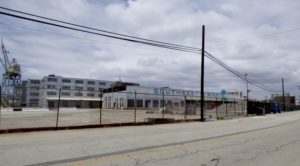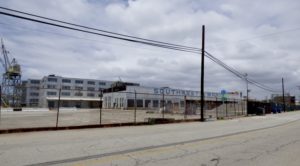For the second time in under 18 months, SpaceX has abandoned plans to build a facility at the Port of Los Angeles because of its next-generation Starship launching vehicle.
At a March 27 letter obtained from SpaceNews, SpaceX advised the Port of Los Angeles that it terminated a rental accepted for a parcel of land at the vent. News of this lease termination was first reported by the Los Angeles Times.
The letter, signed by Bret Johnsen, the principal financial officer of SpaceX, functioned as a 45-day note of the intention to terminate the rental of SpaceX, May 11, making the effective end date of this rental. The letter didn’t explain why the rental was being terminated by the business.
The lease was for a property known as Southwest Marine at the interface that has been unoccupied for ages. SpaceX initially signed a lease using the port in 2018 to build a mill for a vehicle called the Large Falcon Rocket, ” or BFR. SpaceX said it had the water accessibility given by the port home to transport the vehicles, that are too big to move to start sites in Florida or Texas.
SpaceX, though, terminated the rental in early 2019 as a portion of a business effort to streamline. The business said it would instead fabricate what was currently known as its own Super Heavy booster, and Starship, at its South Texas test website in addition to a centre in Cocoa, Florida, not far from the Kennedy Space Center.
SpaceX came straight back to the Port of Los Angeles, looking for a revised version of its original rental, this season. Instead of build an entirely new facility at the Southwest Marine website, it would instead take an”adaptive reuse” strategy for the website, making use of existing buildings there in addition to temporary structures such as big tents.
“We are extremely interested in creating our operations and I think that it presents a exceptional opportunity for us according to the preceding history of this project, and obviously the water accessibility for some of the plans that we have for your project.”
The rental was accepted by the board at this meeting with a voice vote. The Los Angeles City Council unanimously accepted the rental arrangement at a Feb. 25 interview, a bit more than a month before the company issued its own conclusion.
Even though Johnsen’s letter gave no justification for SpaceX’s termination of this rental, he also said the company was committed to keeping operations in California generally, and at the Port of Los Angeles in particular.
There is, though, little activity at the interface. The Last Dragon cargo mission, CRS-20, splashed down in the Pacific from the California coast in April, and has been returned to the Port of Los Angeles by recovery boats. Future cargo assignments, in addition to Crew Dragon assignments, will instead splash down into the Atlantic. A deficiency of launch activity in Vandenberg Air Force Base led a booster retrieval droneship to proceed to encourage a greater cadence of launches there.
The choice to again terminate the port rental, along with a prior decision to stop Starship operate in Florida, makes South Texas the hub of Starship production function.
Musk, in a succession of tweets, stated the firm would soon build a”giant high bay” there for stacking the Super Heavy booster. That building is going to be 81 meters tall, far higher at the website.
Starship improvement failed to fulfill the schedules Musk had place for this. At a media event at the Boca Chica website in late September 2019, he stated he expected to begin test flights of the primary Starship model, Starship Mark 1, in one. “This will sound completely nuts, but I believe we would like to try to reach orbit in under six months,” he explained at the occasion, a program that he quotes to be”accurate to within a month or two.”
Ever since then, no Starship model has left the ground from flight, let alone hit orbit. This Starship Mark 1 version was destroyed in a test in November 2019, and three prototypes have been destroyed, most lately after what seemed to be a thriving static-fire test, in a May 29 burst.
Regardless of the setbacks, Musk is keeping an ambitious program for Starship. Asked on Twitter a week if he had the goal of an uncrewed Mars mission using the vehicle in 2022, accompanied closely by a crewed mission in 2024, he provided a one-word response:”Yes”
– Advertisement –


